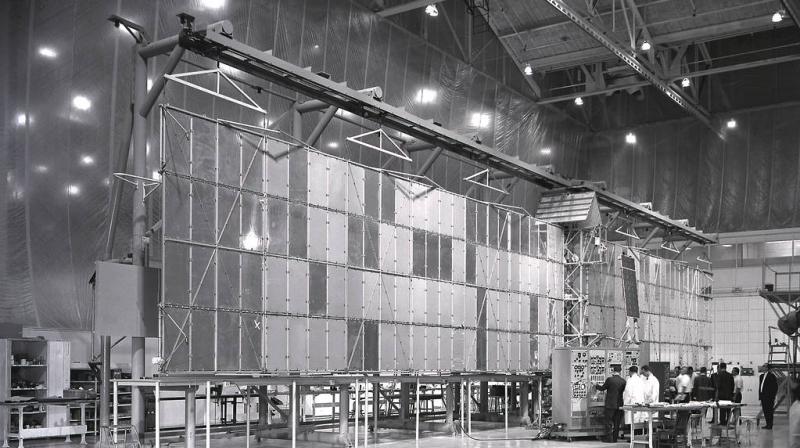NASA history: First pegasus satellite launches Feb.16, 1965

This week in 1965, the first Saturn launch vehicle carrying an operational payload launched from NASA's Kennedy Space Center. SA-9, a Saturn I Block II launch vehicle and the eighth Saturn flight, delivered the first of three Pegasus meteoroid detection satellites into near-Earth orbit.
The satellites, developed and managed by NASA's Marshall Space Flight Center, electronically recorded the size and frequency of particles in space and compared the performance of protected and unprotected solar cells — results that informed future Apollo flights to the moon.
In the image, technicians inspect the satellite's 96-foot wingspan before launch.
The Saturn I launch vehicle was built at Marshall's Fabrication and Assembly Engineering Division.
Marshall also designed, developed and managed the production of the Saturn V rocket that took astronauts to the moon.
Today, Marshall is developing NASA's Space Launch System, the most powerful rocket ever built that will be capable of sending astronauts deeper into space than ever before, including to an asteroid and Mars.
—NASA

